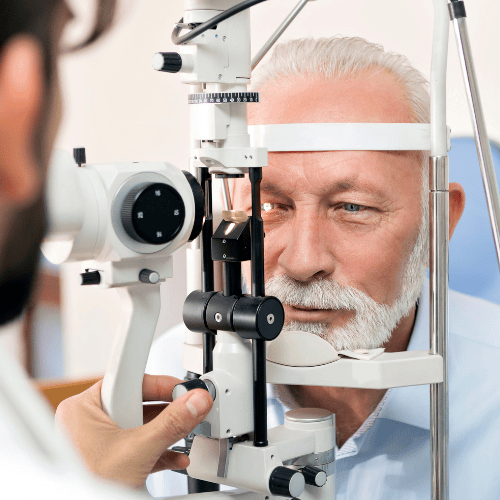THE MANY CAUSES OF DOUBLE VISION
Double vision (or “diplopia” as your optometrist calls it) is the tendency to see more than one image of the same object. There are several causes, some of which are harmless and others more sinister.
Stroke or other severe brain injury – such as swelling, tumour or aneurysm – could have diplopia as one of the symptoms. A sudden onset of diplopia should always be evaluated by your optometrist. (If you are experiencing symptoms of a stroke, remember the acronym FAST (Facial drooping, Arm weakness, Speech difficulties – Time to visit the emergency room). A very small stroke of one of the arteries that supplies an eye muscle may occur without the other symptoms described. This may cause sudden onset of diplopia. Most of the time this type of stroke is caused by diabetes or high blood pressure, but other diseases such as Multiple Sclerosis may be involved.
Eye teaming disorder – or binocular vision disorder. If your eyes have trouble working together you may have double vision that comes on after doing a lot of reading, driving, or just when you are tired. This type of diplopia can often be helped with vision therapy (exercises for the eye muscles) or a special correction in your eyeglasses designed to improve eye teaming. If one eye constantly deviates away from the other (a condition called “strabismus”) diplopia may also be a symptom. People who have had strabismus since childhood may have a constantly deviating eye without diplopia, because the brain has learned to suppress or ignore the image from that eye.
Dry eyes – a very common problem in Alberta, if the front of the eye (cornea) is not properly lubricated an irregular image may occur. This may be interpreted as double vision. Using an artificial tear supplement prescribed by your eye doctor usually lessens the frequency of the blurry vision or diplopia. There are many other new treatments for dry eyes – Book an appointment with us to learn more.
Corneal disease – for similar reasons as dry-eye related diplopia, corneal disease such as keratoconus causes an irregular image to form that may be interpreted as double vision.
Cataracts – a clouding of the lens within the eye. While not typical, it is possible to have double vision from a cataract. If closing one eye or the other does not eliminate the diplopia, you may have a cataract.
Astigmatism – an irregular curvature of the cornea. Certain people with astigmatism may report diplopia however blurred vision is the more usual symptom described with this condition.
The treatment for diplopia depends on the underlying cause. Do not ignore double vision. Consult one of our optometrists if you are experiencing any type of problem with your vision. Book an Appointment











